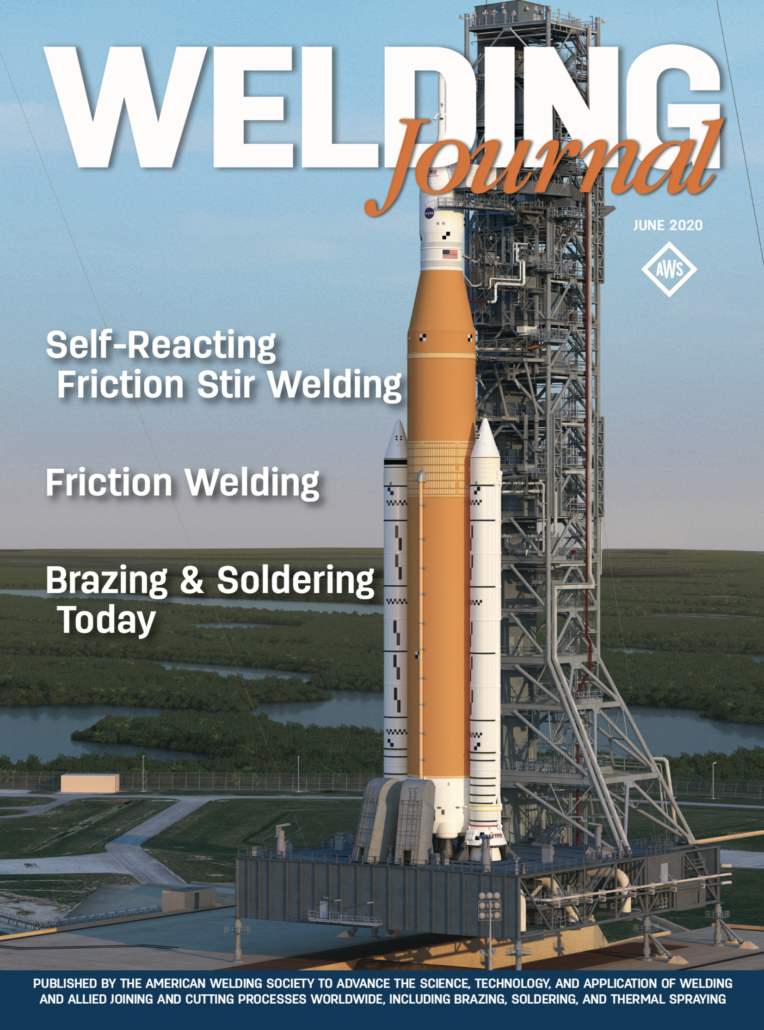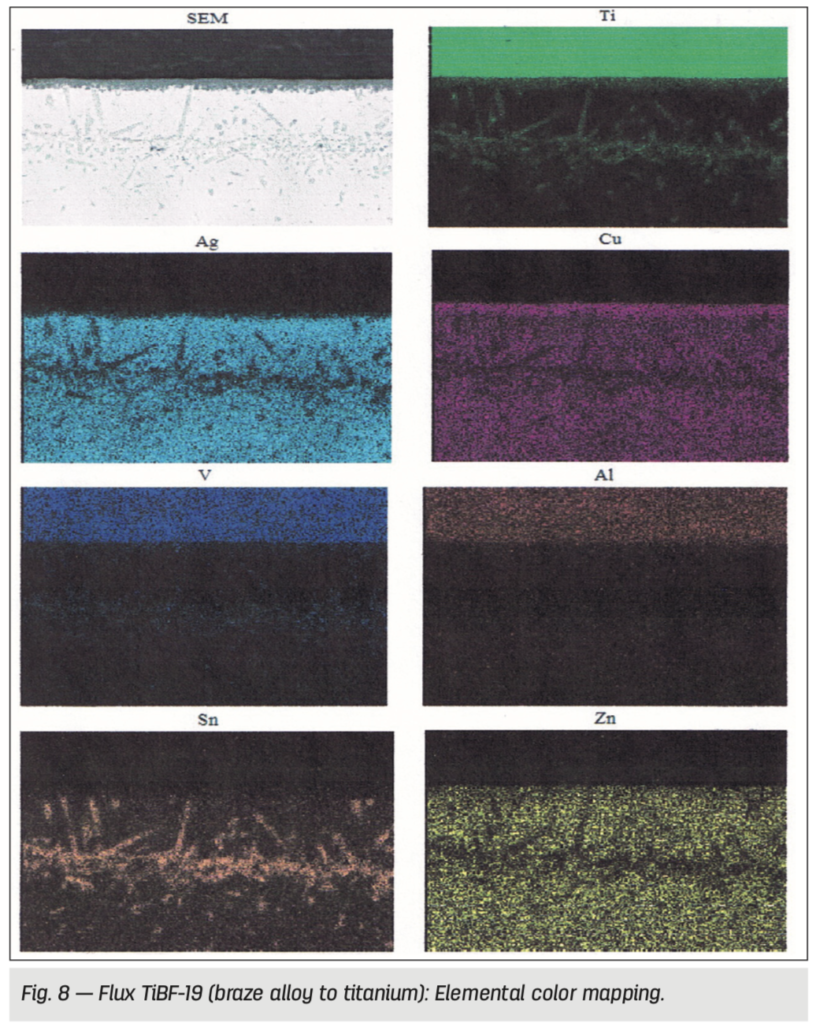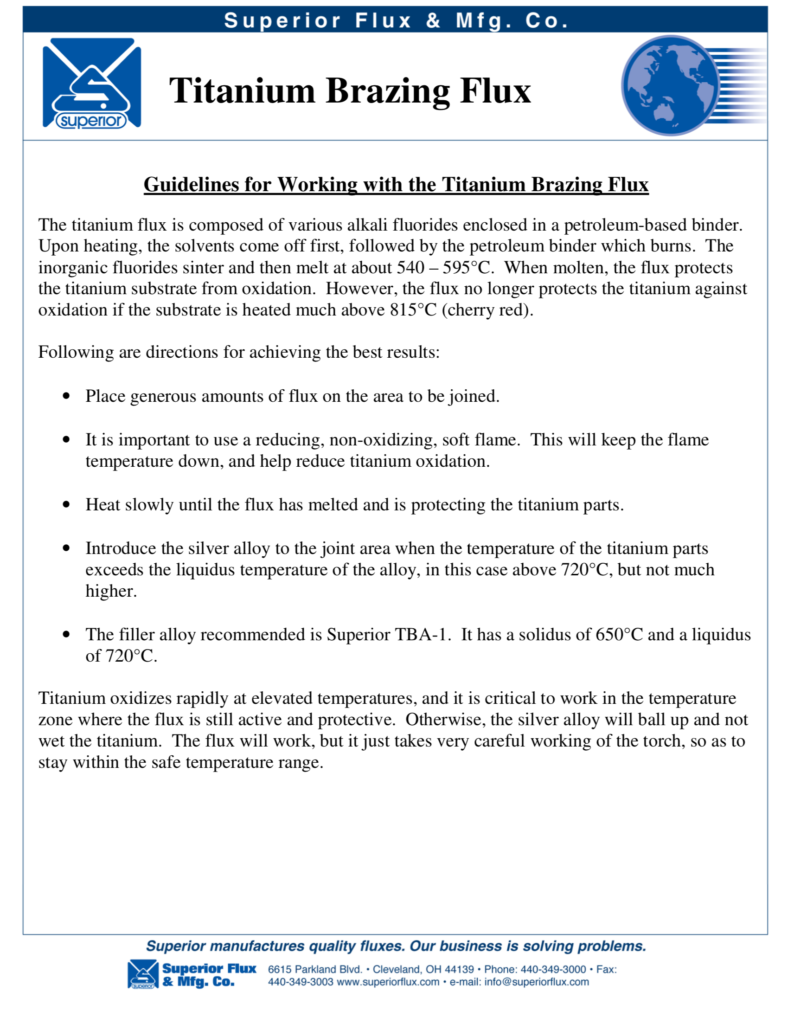Brazing Titanium in Air
Another Superior Flux Technical Article
Superior Flux is proud to have had yet another article published in an important trade journal, this time the June 2020 edition of Welding Journal.
The topic is open air brazing of Titanium, which is quite the challenge. But Superior Flux never shies away from a challenge.
Titanium is a great alloy. It is strong, corrosion resistant and relatively light. Not surprisingly, Titanium is often a go-to alloy in medical and aerospace components, as well as in many familiar objects, such as eyeglass frames, bicycle frames and golf clubs, to name a few.
For all its virtues, there is a downside to Titanium. It oxidizes so rapidly that it is virtually impossible to solder, and it can only be brazed in a controlled atmosphere furnace.
Open air brazing of Titanium was previously believed to be impossible; there simply wasn’t a brazing flux and alloy combination that was active enough to overcome Titanium’s aggressive oxidation formation.
But that was until Superior Flux took on the Titanium brazing challenge. The result was our unique line of Titanium Brazing Flux (our TiBF-19) and Titanium Brazing Alloy (TBA-1). [Titanium Brazing Page ]Together these two products make open air brazing of Titanium a possibility, which is exactly the topic our new article, “Brazing Titanium in Air.”
The study we conducted for the article makes effective use of both SEM and EDS analysis. Particularly exciting is the use of element color mapping to clearly display the crucial inter-metallic bond formed between the Titanium and the Silver-bearing braze alloy, during brazing.
As the article explains, our TiBF-19 Titanium Brazing Flux and TBA-1 Titanium Brazing Alloy open up the possibilities of brazing Titanium to Titanium, as well as Titanium to other alloys like Copper and Stainless Steel.
However, it is important to understand that even with the right flux and alloy combination, open air Titanium brazing can be trickier than brazing other alloys.
Heat plays an important role in Titanium brazing, where heat is both your friend and your enemy. On one hand the Titanium needs to get hot enough to facilitate brazing; on the other hand, the hotter the Titanium gets, the more oxides are produced on its surface. It’s these oxides that the TiBF-19 Titanium Brazing Flux needs to work against. The trick is heating up the Titanium enough to enable brazing, but not so much that the flux will be overwhelmed by the mounting oxides.
This balancing act between not enough heat and too much heat is the reason why smaller Titanium parts are easier to braze than larger parts. With larger parts there is a greater heat sink effect, which makes temperature maintenance harder. It is for this reason that some customers opt for induction over torch heating when brazing larger Titanium parts.
Contact Us
Contact us with your Titanium brazing applications. We sell our Titanium Brazing Flux (TiBF-19) and Titanium Brazing Alloy (TBA-1) in small evaluation quantities. We provide guidelines to help you with Titanium brazing, and we are more than happy to speak with you about your application Contact us





